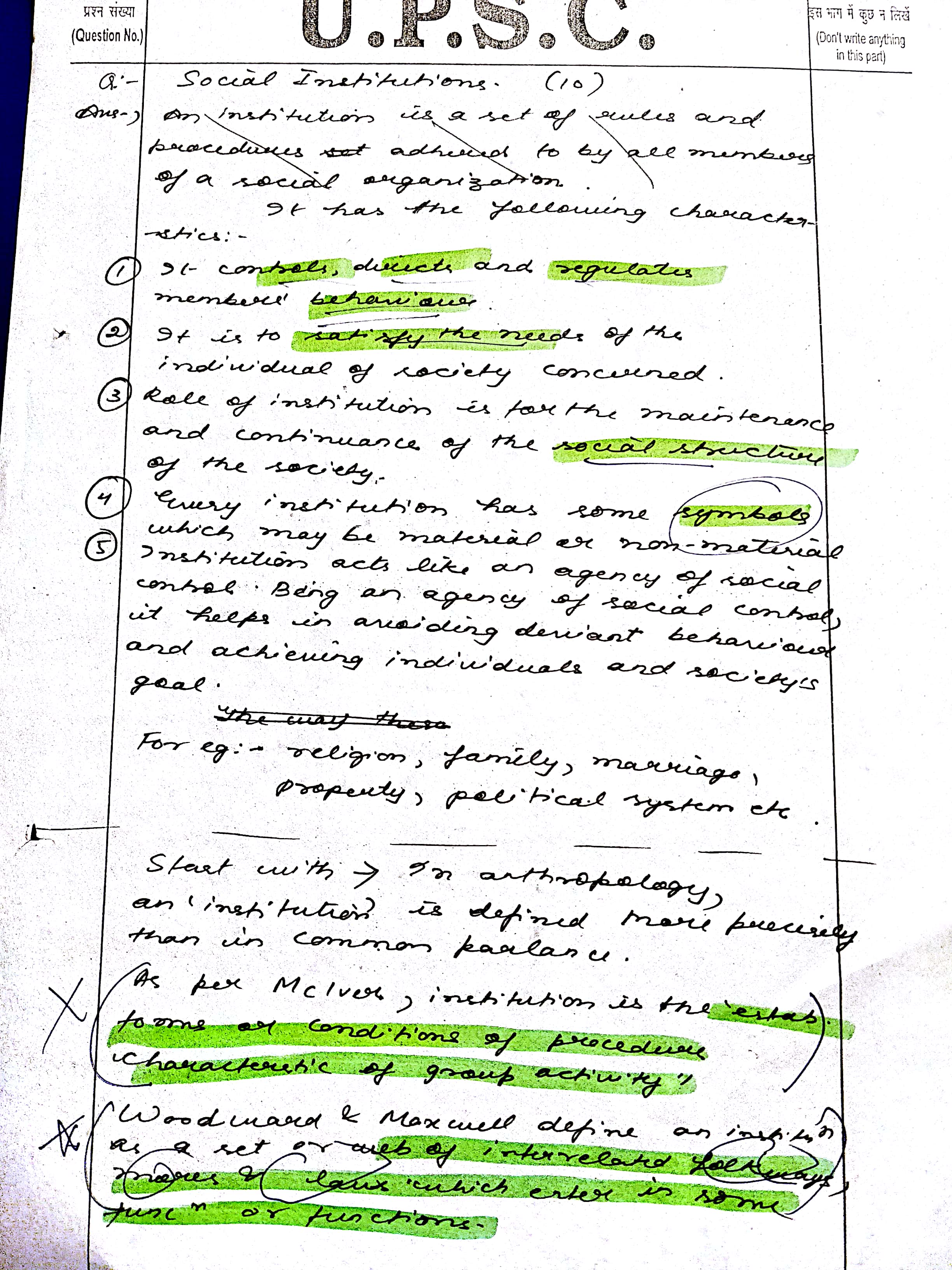Social Institutions 1-2 def, types functions


Only add diagrams in answer. That too in brief
Primary Instituitions
Sociologists often reserve the term "institution" to describe normative systems that operate in five basic areas of life, which may be designated as the primary institutions.
(1) In determining Kinship;
(2) in providing for the legitimate use of power;
(3) in regulating the distribution of goods and services;
(4) in transmitting knowledge from one generation to the next; and
(5) in regulating our relation to the supernatural.
In shorthand form, or as concepts, these five basic institutions are called the family, government, economy, education and religion.

The five primary institutions are found among all human groups. They are not always as highly elaborated or as distinct from one another but in rudimentary form at last, they exist everywhere. Their universality indicates that they are deeply rooted in human nature and that they are essential in the development and maintenance of orders.
The secondary institutions derived from Family would be


The secondary institutions of economics would be


The secondary institutions of Religion would be


The secondary institutions of education would be


The secondary institutions of State would be


Sociologists operating in terms of the functionalist model society have provided the clearest explanation of the functions served by social institutions. Apparently there are certain minimum tasks that must be performed in all human groups. Unless these tasks are performed adequately, the group will cease to exist. An analogy may help to make the point. We might hypothesize that cost accounting department is essential to the operation of a large corporation. A company might procure a superior product and distribute it then at the price that is assigned to it; the company will soon go out of business. Perhaps the only way to avoid this is to have a careful accounting of the cost of each step in the production and distribution process.
An important feature that we find in the growth of institutions is the extension of the power of the state over the other four primary institutions. The state now exercises more authority by laws and regulations. The state has taken over the traditional functions of the family like making laws regulating marriage, divorce, adoption and inheritance. The authority of state has similarly been extended to economics, to education and to religion. New institutional norms may replace the old norms but the institution goes on. The modern family has replaced the norms of patriarchal family yet the family as an institution continues. Sumner and Keller has classified institutions in nine major categories .He referred to them as pivotal institutional fields and classified them as follows:

